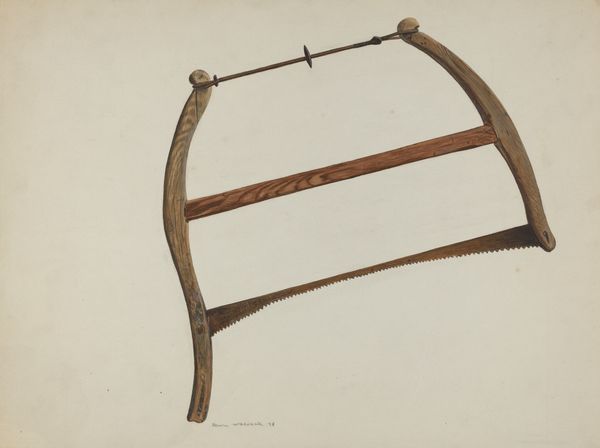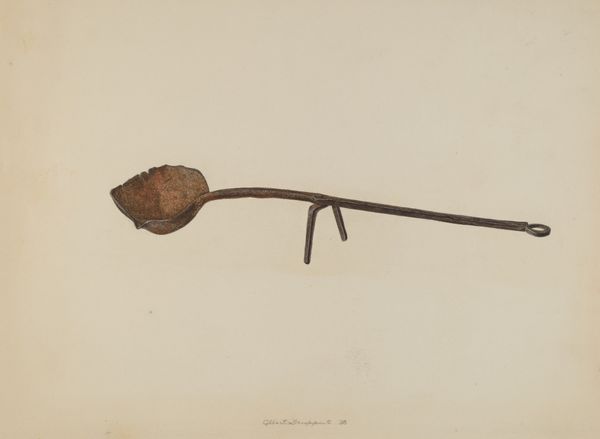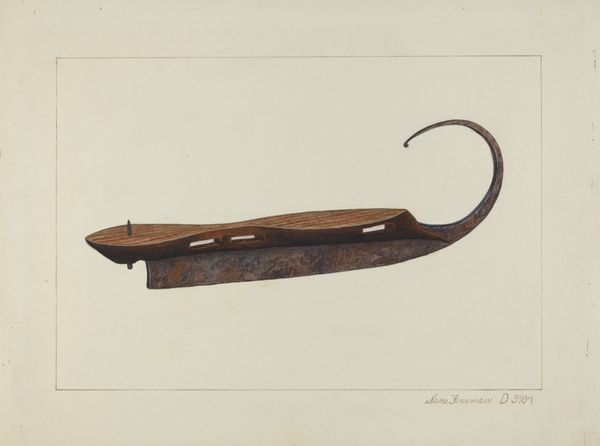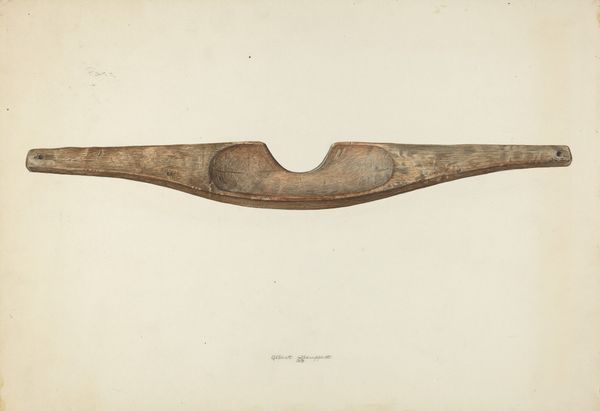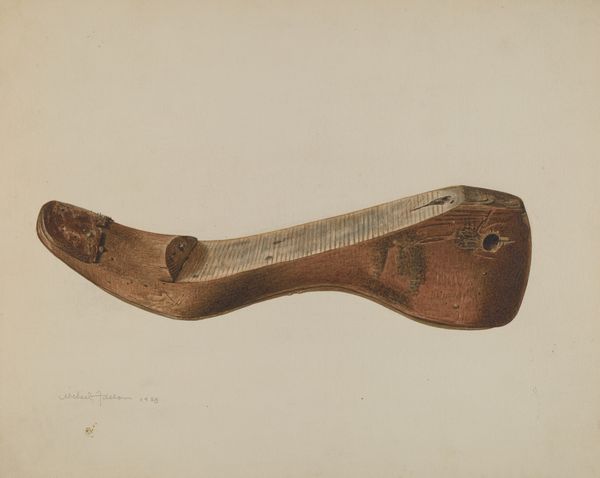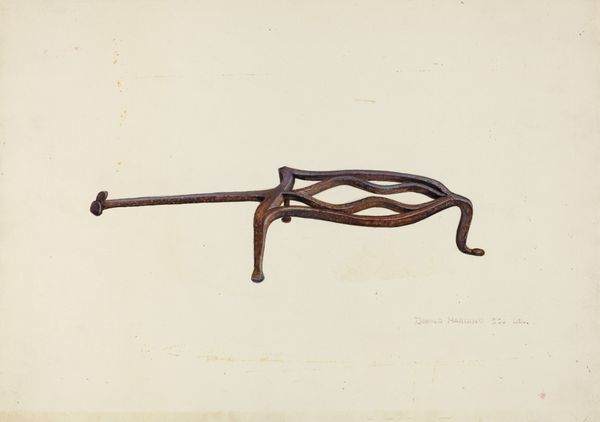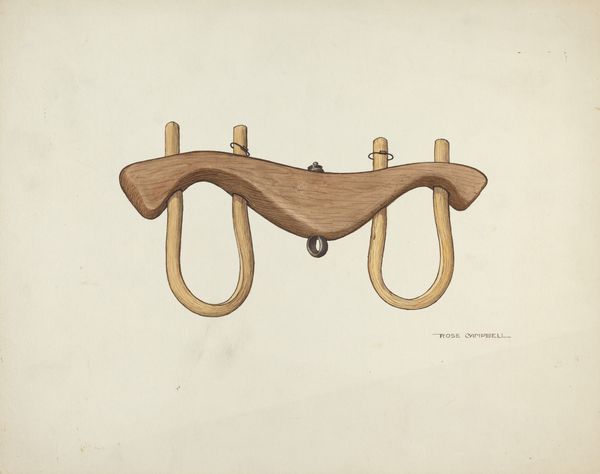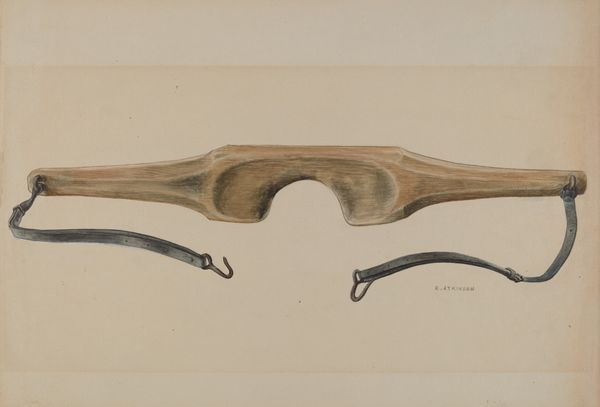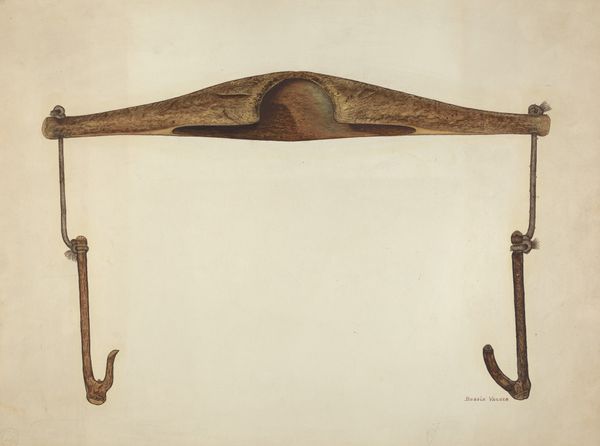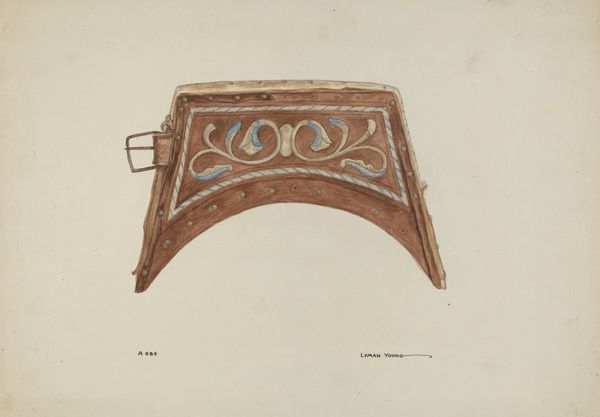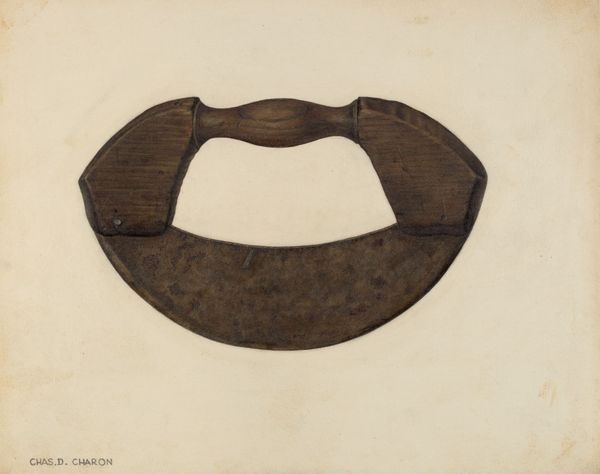
drawing, pencil
#
drawing
#
pencil sketch
#
pencil drawing
#
pencil
#
watercolor
Dimensions: overall: 30.5 x 40.6 cm (12 x 16 in.)
Copyright: National Gallery of Art: CC0 1.0
Curator: Here we have Max Fernekes’ drawing titled “Drawknife,” dating to about 1938. Fernekes used pencil to bring this tool to life. Editor: There’s a simplicity that speaks volumes, a quiet dignity in the solitary depiction of this… implement. It feels very austere, yet somehow, softly human. Curator: Interesting, austere. For me, this drawknife symbolizes the ingenuity and resourcefulness of a time when people relied heavily on hand tools. It speaks of woodworking traditions. We're so divorced from physical labor; it represents a tangible connection to skills that shaped communities. Editor: I see what you mean. It does offer us a sort of access. But what about its formal composition? The symmetry, the repetition of form with the two handles and the blade… The warm hues are almost tactile, and emphasize a sense of craftsmanship. I would say it lends an unusual weight to such an everyday object, maybe that is why you see the ingenuity reflected there? Curator: Precisely! Its familiarity is comforting but also symbolic. The curve of the blade itself could even suggest a crescent moon, tying into ancient agrarian symbolism, cycles of labor, seasons… even suggesting notions of labor and craftsmanship transcending cultures. Editor: Yes, perhaps. The crescent shape… it creates an interesting negative space too, a kind of void at the tool’s heart. But in general, these lines make the image very balanced overall. The artist seems to really enjoy the natural material he is drawing… notice those marks. Curator: Look closer—notice how light touches certain edges? Consider how such tools represented self-sufficiency. They stand for values—patience, precision, knowing one's materials… qualities increasingly eroded today. This artwork stands as a symbol of such disappearing skillsets. Editor: Well, Fernekes gives us something to remember those values by then. Curator: Indeed. It serves as a quiet memorial, an embodiment of human potential made material, that we should really bear in mind. Editor: It's certainly made me think more deeply about the story of the objects that surround us.
Comments
No comments
Be the first to comment and join the conversation on the ultimate creative platform.
